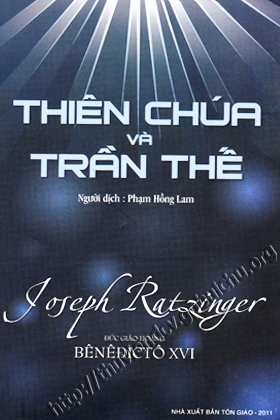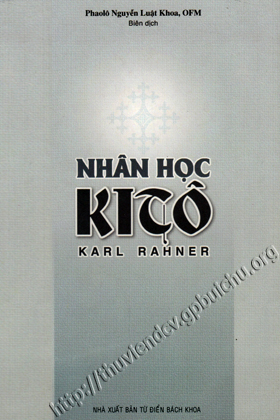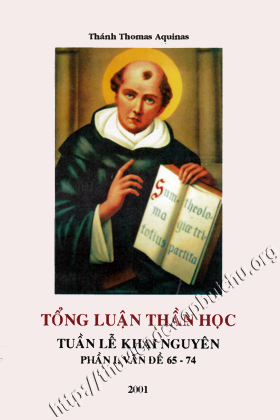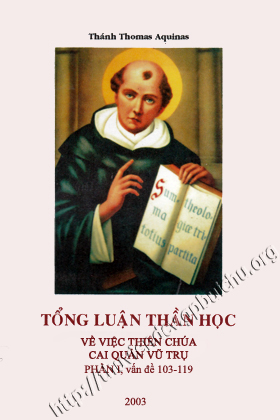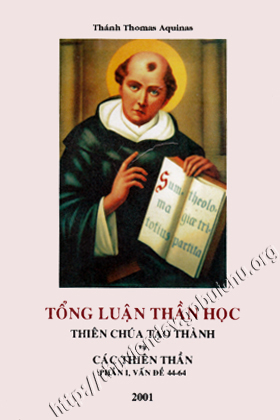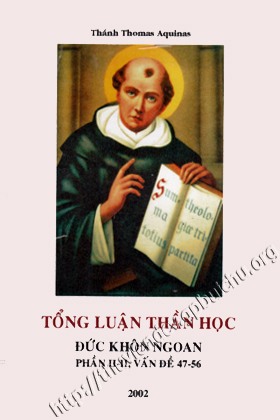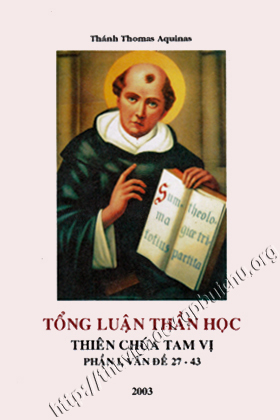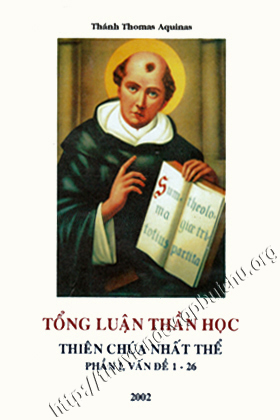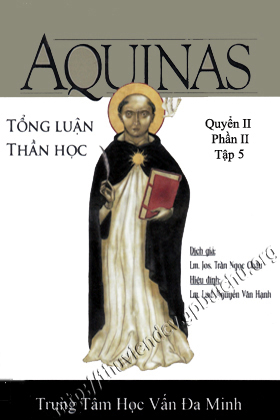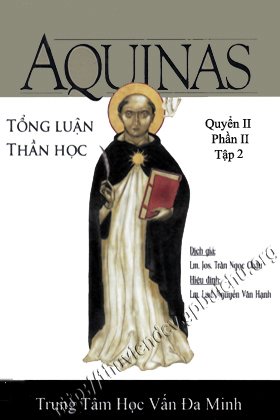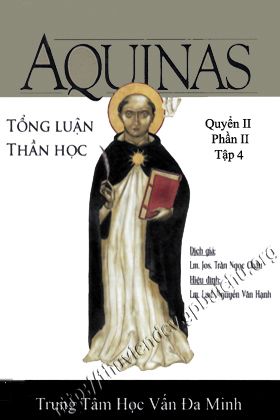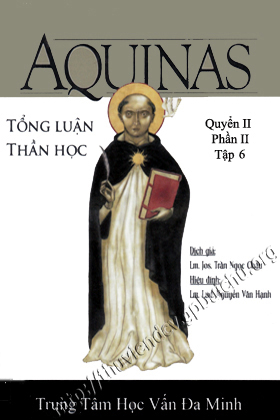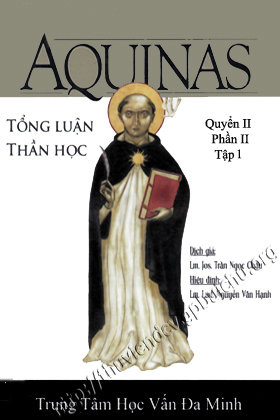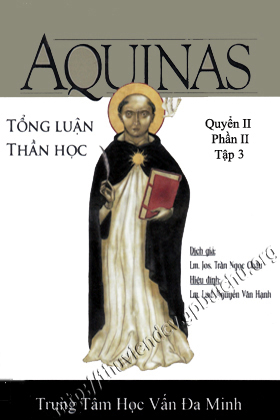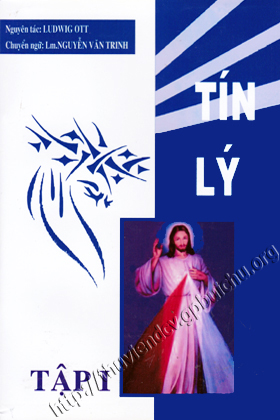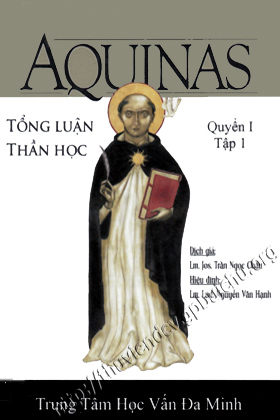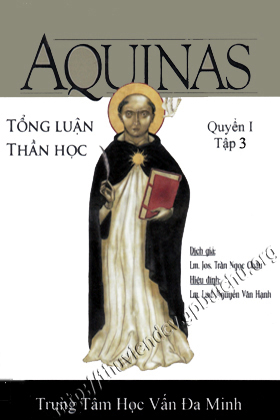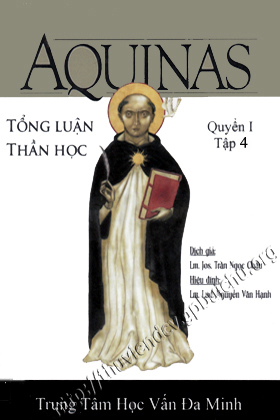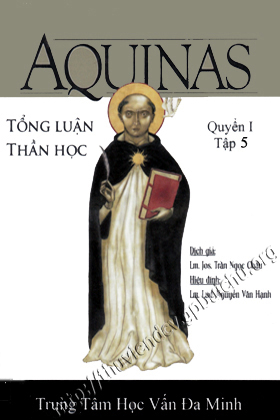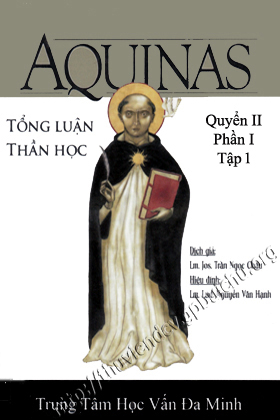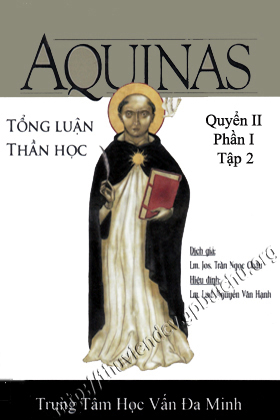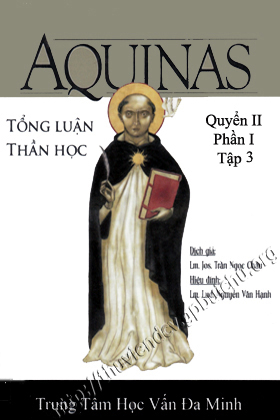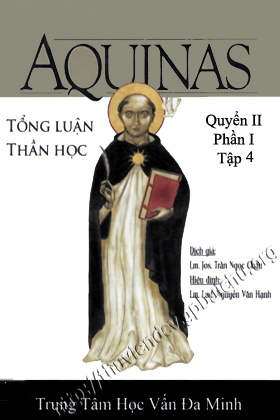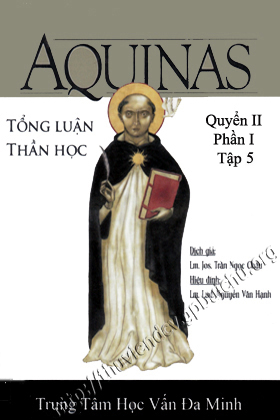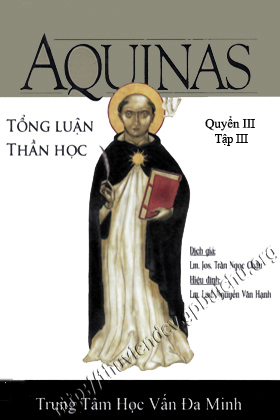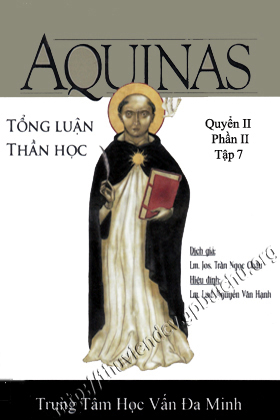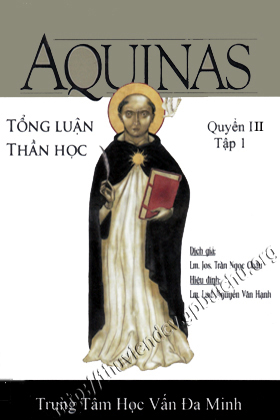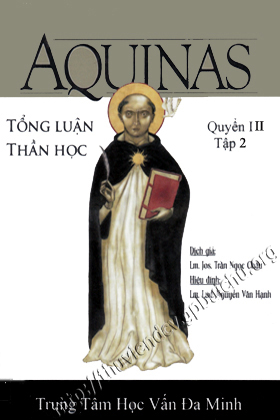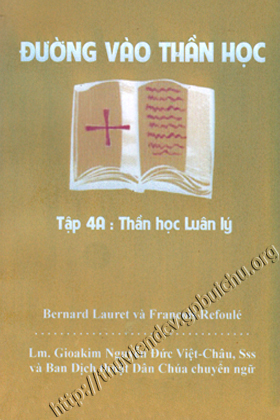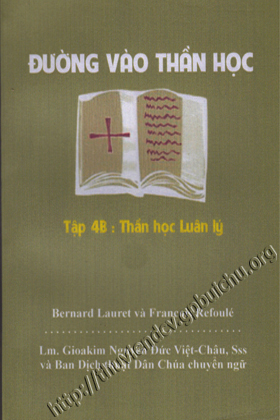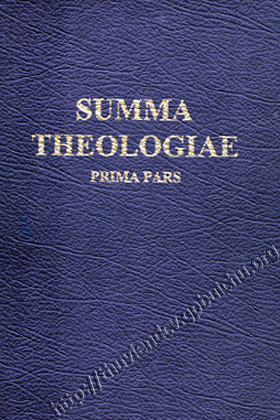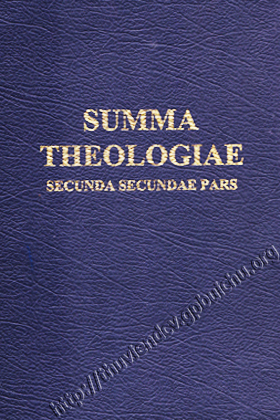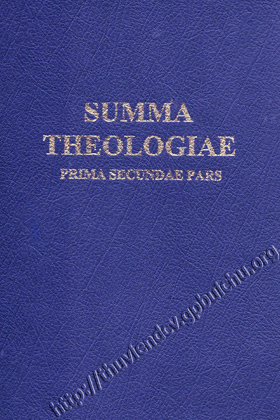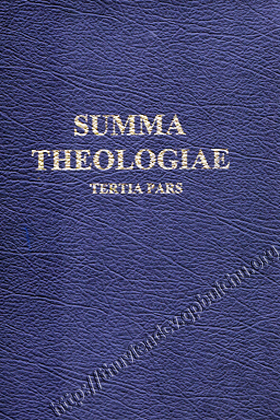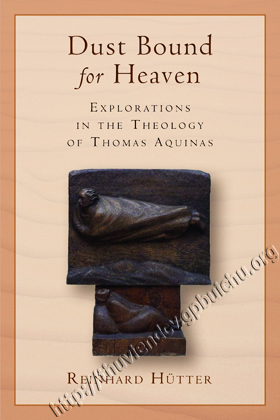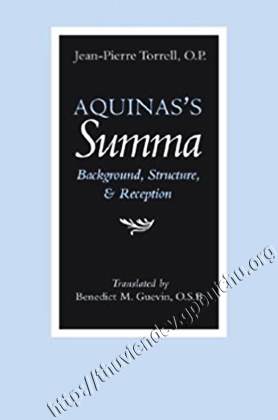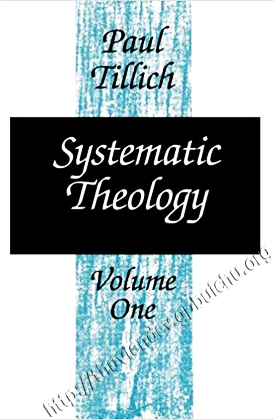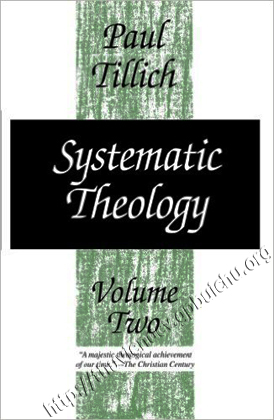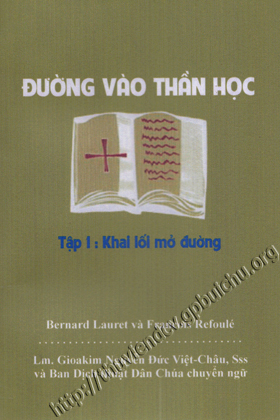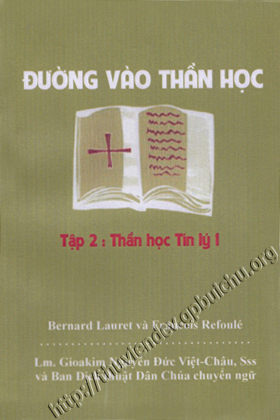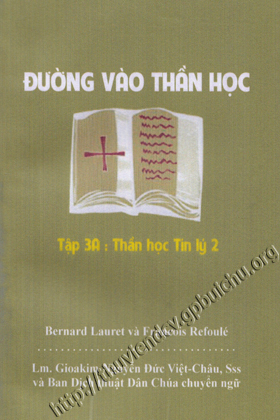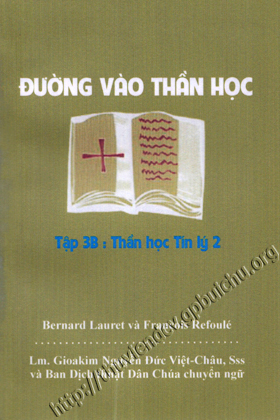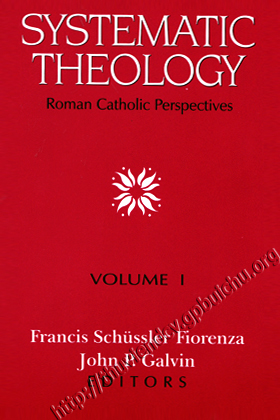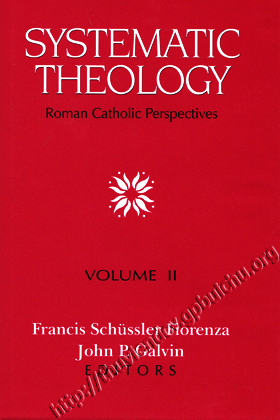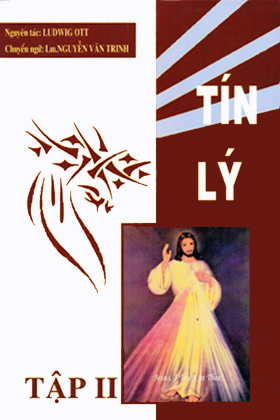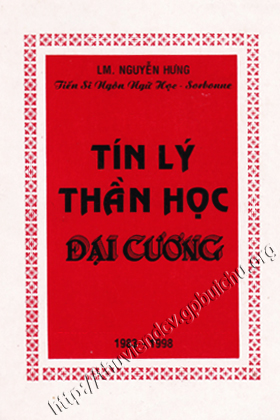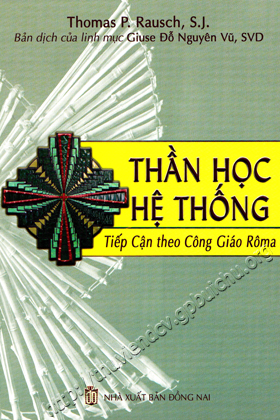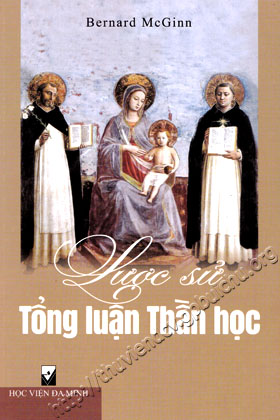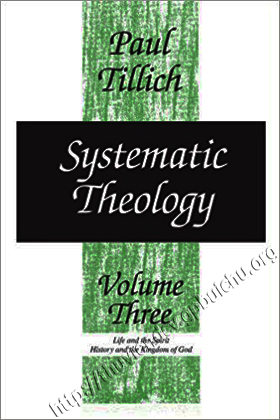
| Systematic Theology | |
| Phụ đề: | Life and the Spirit: History and the Kingdom of God |
| Tác giả: | Paul Tillich |
| Ký hiệu tác giả: |
TI-P |
| DDC: | 230.2 - Thần học Kitô giáo |
| Ngôn ngữ: | Anh |
| Tập - số: | Vol 3 |
| Số cuốn: | 1 |
Hiện trạng các bản sách
|
||||||||||||||||
» Thêm vào danh sách tác phẩm yêu thích
| Giới thiệu | 3 |
| Phần IV: CUỘC SỐNG VÀ TINH THẦN | |
| I. CUỘC SỐNG, NHỮNG ĐIỀU MƠ HỒ VÀ VIỆC TÌM KIẾM CUỘC SỐNG RÕ RÀNG | 11 |
| A. Sự thống nhất đa chiều của cuộc sống | 11 |
| 1. Sự sống: Bản chất và sự tồn tại | 11 |
| 2. Vụ kiện chống lại "Levels" | 12 |
| 3. Kích thước, Phạm vi, Mức độ | 15 |
| 4. Các chiều kích của cuộc sống và mối quan hệ của chúng | 17 |
| a) Các chiều kích trong cõi vô cơ và hữu cơ | 17 |
| b) Ý nghĩa của tinh thần như một chiều kích của cuộc sống | 21 |
| c) Chiều kích của Tinh thần trong mối quan hệ với các chiều kích trước đó | 25 |
| d) Chuẩn mực và giá trị trong chiều kích tinh thần | 28 |
| B. Sự tự hiện thực hóa của cuộc sống và sự mơ hồ của nó | 30 |
| Sự cân nhắc cơ bản: Các chức năng cơ bản của sự sống và bản chất mơ hồ của chúng | 30 |
| 1. Sự tự hợp nhất của cuộc sống và sự mơ hồ của nó | 32 |
| a) Cá nhân hóa và tập trung | 32 |
| b) Tự hợp nhất và tan rã nói chung: Sức khỏe và bệnh tật | 34 |
| c) Sự tự hội nhập của sự sống trong chiều kích tinh thần: Đạo đức, hay sự cấu thành của bản ngã cá nhân | 38 |
| d) Sự mơ hồ của sự tự hòa nhập cá nhân: Sự có thể, sự thực và sự mơ hồ của sự hy sinh | 41 |
| e) Sự mơ hồ của Luật đạo đức: Mệnh lệnh đạo đức, Chuẩn mực đạo đức, Động cơ đạo đức | 44 |
| 2. Sự tự sáng tạo của cuộc sống và sự mơ hồ của nó | 50 |
| a) Động lực và tăng trưởng | 50 |
| b) Tự sáng tạo và Hủy diệt bên ngoài Chiều kích của Tinh thần: Sự sống và Cái chết | 51 |
| c) Sự tự sáng tạo của cuộc sống dưới chiều kích tinh thần: Văn hóa | 57 |
| d) Sự mơ hồ của hành động văn hóa: Sự sáng tạo và sự hủy diệt ý nghĩa | 68 |
| e) Sự mơ hồ của chủ nghĩa nhân văn | 84 |
| 3. Sự vượt qua bản ngã của cuộc sống và sự mơ hồ của nó | 86 |
| a) Tự do và hữu hạn | 86 |
| b) Tự vượt qua và sự phàm tục hóa nói chung: Sự vĩ đại của cuộc sống và sự mơ hồ của nó | 88 |
| c) Cái vĩ đại và cái bi thảm | 92 |
| d) Tôn giáo liên quan đến đạo đức và văn hóa | 94 |
| e) Sự mơ hồ của tôn giáo | 98 |
| C. Cuộc tìm kiếm sự sống rõ ràng và những biểu tượng của sự mong đợi | 107 |
| II. SỰ HIỆN DIỆN CỦA THIÊN THẦN | 111 |
| A. Sự biểu hiện của sự hiện diện tâm linh trong tinh thần của con người | 111 |
| 1. Tính chất biểu hiện của Thần Linh Thiêng Liêng trong Thần Linh Con Người | 111 |
| a) Nguyên lý của Linh hồn con người và Linh hồn thần thánh | 111 |
| b) Cấu trúc và sự sung sướng | 114 |
| c) Phương tiện truyền thông của sự hiện diện tâm linh | 120 |
| 2. Nội dung của sự biểu hiện của Thánh Linh Thiêng Liêng trong tinh thần con người: Đức tin và tình yêu | 129 |
| a) Sự hợp nhất siêu việt và sự tham gia vào nó | 129 |
| b) Sự Hiện Diện của Thánh Linh Biểu Hiện Như Đức Tin | 130 |
| c) Sự Hiện Diện của Thánh Linh Biểu Hiện như Tình Yêu | 134 |
| B. Sự biểu hiện của sự hiện diện tâm linh trong nhân loại lịch sử | 138 |
| 1. Tinh thần và Bản thể mới: Sự mơ hồ và sự phân mảnh | 138 |
| 2. Sự hiện diện tâm linh và sự mong đợi về Đấng mới trong tôn giáo | 141 |
| 3. Sự hiện diện thiêng liêng trong Chúa Giêsu là Đấng Christ: Thần học về Chúa Kitô | 144 |
| 4. Sự Hiện Diện Tâm Linh và Con Người Mới trong Cộng Đồng Tâm Linh | 149 |
| a) Con Người Mới trong Chúa Giêsu là Đấng Christ và trong Cộng Đồng Thiêng Liêng | 149 |
| b) Cộng đồng tâm linh trong giai đoạn tiềm ẩn và giai đoạn biểu hiện | 152 |
| c) Dấu hiệu của cộng đồng tâm linh | 155 |
| d) Cộng đồng tâm linh và sự thống nhất của tôn giáo, văn hóa và đạo đức | 157 |
| III. THẦN LINH THIÊNG LIÊNG VÀ SỰ NGẦM NGẶC CỦA TÌNH YÊU | 162 |
| A. Sự hiện diện tâm linh và tính chất lưỡng tính của tôn giáo | 162 |
| 1. Cộng đồng tâm linh, Giáo hội và các Giáo hội | 162 |
| PHẦN V: LỊCH SỬ VÀ VƯƠNG QUỐC CỦA THIÊN CHÚA | |
| Giới thiệu | 297 |
| Vị trí có hệ thống của Phần thứ năm của Hệ thống Thần học và Chiều kích Lịch sử của Cuộc sống | 297 |
| I. LỊCH SỬ VÀ CUỘC TÌM KIẾM VƯƠNG QUỐC CỦA THIÊN CHÚA | 300 |
| A. Cuộc đời và Lịch sử | 300 |
| 1. Con người và Lịch sử | 300 |
| a) Lịch sử và ý thức lịch sử | 300 |
| b) Chiều kích lịch sử dưới góc nhìn lịch sử nhân loại | 302 |
| c) Tiền sử và Hậu sử | 306 |
| d) Những người mang lịch sử: cộng đồng, nhân cách, nhân loại | 308 |
| 2. Lịch sử và các phạm trù của sự tồn tại | 313 |
| a) Các quá trình và phạm trù của cuộc sống | 313 |
| b) Thời gian, Không gian và Chiều kích của Cuộc sống nói chung | 315 |
| c) Thời gian và Không gian theo các Chiều của Lịch sử | 318 |
| d) Nhân quả, bản chất và các chiều kích của cuộc sống nói chung | 321 |
| e) Nhân quả và bản chất dưới các chiều kích của lịch sử | 324 |
| 3. Động lực của lịch sử | 326 |
| a) Sự vận động của lịch sử: Xu hướng, Cấu trúc, Thời kỳ | 326 |
| b) Lịch sử và quá trình sống | 331 |
| c) Tiến trình lịch sử: Thực trạng và giới hạn của nó | 333 |
| B. Sự mơ hồ của cuộc sống dưới chiều kích lịch sử | 339 |
| 1. Sự mơ hồ của quá trình tự hội nhập lịch sử: Đế chế và tập trung quyền lực | 339 |
| 2. Sự mơ hồ của sự tự sáng tạo lịch sử: cách mạng và phản ứng | 343 |
| 3. Sự mơ hồ của siêu việt lịch sử: "Giai đoạn thứ ba" như đã cho và như mong đợi | 344 |
| 4. Sự mơ hồ của cá nhân trong lịch sử | 346 |
| C. Diễn giải Lịch sử và Hành trình tìm kiếm Vương quốc Thiên Chúa | 348 |
| 1. Bản chất và vấn đề của việc giải thích lịch sử | 384 |
| 2. Câu trả lời phủ định cho câu hỏi về ý nghĩa của lịch sử | 350 |
| 3. Những câu trả lời tích cực nhưng không đầy đủ cho câu hỏi về ý nghĩa của lịch sử | 352 |
| 4. Biểu tượng "Nước Thiên Chúa" là câu trả lời cho câu hỏi về ý nghĩa của lịch sử | 356 |
| a) Đặc điểm của biểu tượng “Nước Thiên Chúa” | 356 |
| b) Yếu tố nội tại và siêu việt trong biểu tượng “Vương quốc của Chúa” | 359 |
| II. VƯƠNG QUỐC THIÊN CHÚA TRONG LỊCH SỬ | 362 |
| A. Động lực của Lịch sử và Bản thể Mới | 362 |
| 1. Ý tưởng về “Lịch sử cứu rỗi” | 362 |
| 2. Sự biểu hiện trung tâm của Vương quốc Đức Chúa Trời trong lịch sử | 364 |
| 3. Kairos và Kairoi | 369 |
| 4. Sự quan phòng lịch sử | 372 |
| B. Vương quốc của Thiên Chúa và các Hội thánh | 374 |
| 1. Các Hội Thánh như là Đại Diện của Vương Quốc Đức Chúa Trời trong Lịch Sử | 374 |
| 2. Vương quốc của Thiên Chúa và Lịch sử của các Giáo hội | 377 |
| C. Vương quốc của Đức Chúa Trời và Lịch sử Thế giới | 382 |
| 1. Lịch sử Giáo hội và Lịch sử Thế giới | 382 |
| 2. Vương quốc của Thiên Chúa và sự mơ hồ của sự tự hội nhập lịch sử | 385 |
| 3. Vương quốc của Thiên Chúa và sự mơ hồ của sự tự sáng tạo lịch sử | 388 |
| 4. Vương quốc của Chúa và sự mơ hồ của sự tự siêu việt trong lịch sử | 390 |
| 5. Vương quốc của Thiên Chúa và sự mơ hồ của cá nhân trong lịch sử | 391 |
| III. NƯỚC THIÊN CHÚA NHƯ LÀ KẾT THÚC CỦA LỊCH SỬ | 394 |
| A. Sự kết thúc của lịch sử hay sự sống vĩnh cửu | 394 |
| 1. Ý nghĩa kép của “Kết thúc lịch sử” và sự hiện diện thường trực của Kết thúc | 394 |
| 2. Sự kết thúc của Lịch sử như là sự nâng cao của Thời gian vào Vĩnh hằng | 396 |
| 3. Sự kết thúc của Lịch sử như là sự phơi bày tiêu cực là Tiêu cực hoặc là "Sự phán xét cuối cùng" | 398 |
| 4. Sự kết thúc của Lịch sử như là Cuộc chinh phục cuối cùng của Sự mơ hồ của Cuộc sống | 401 |
| 5. Phước lành vĩnh cửu như là sự chinh phục vĩnh cửu của sự tiêu cực | 403 |
| B. Con Người Cá Nhân Và Số Mệnh Vĩnh Cửu Của Người | 406 |
| 1. Sự hoàn thành chung và riêng | 406 |
| 2. Sự bất tử như một biểu tượng và một khái niệm | 409 |
| 3. Ý nghĩa của sự Phục sinh | 412 |
| 4. Sự sống đời đời và sự chết đời đời | 415 |
| C Vương quốc của Thiên Chúa: Thời gian và Vĩnh hằng | 419 |
| 1. Sự vĩnh hằng và sự chuyển động của thời gian | 419 |
| 2. Sự sống vĩnh cửu và sự sống thiêng liêng | 420 |
| Mục lục | 427 |




